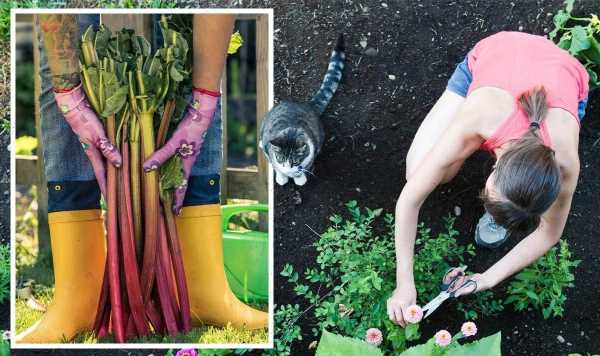Gardening: How to create a watering tool for your plants
We use your sign-up to provide content in ways you’ve consented to and to improve our understanding of you. This may include adverts from us and 3rd parties based on our understanding. You can unsubscribe at any time. More info
The warmer months bring a host of plants into bloom, with everything from fragrant flowers to fruit-bearing crops becoming brighter and riper every day. While some poisonous plants are easy to spot, there are plenty of popular species which could pose a risk to you and your pets – but which ones could you be missing? Here’s your guide to spotting poisonous plants in your garden.
While your garden may look beautiful and abundant in spring and summer, the bright blooms and ripe crops can be deceiving to hungry pets and even humans.
Toxic substances and harmful chemicals can not only carry health risks but also life-threatening hazards – especially if you handle them incorrectly.
Staying safe in the garden is easy to do if you know what to look for while planting, harvesting and picking your plants – but what exactly should you be looking for?


Rhubarb
This tasty fruit is a summer staple for desserts and sweet treats, but it could have serious consequences if harvested incorrectly.
While the red stalks are full of flavour, the leafy green foliage can be detrimental to your health.
Eating too much of the foliage could cause your kidneys to shut down, so be careful to only harvest isolated stalks and discard the green leaves.
Wisteria
This sunning lilac plant is a sight to behold in summer, though the seed pods should be avoided by pet owners at all costs.
The small pods found on the hanging flowerheads are very toxic to dogs, cats and horses, so take extra care in the garden or neighbouring fields.

Rhododendron
While this is known for being a beautiful plant with large flowerheads, the rhododendron can have unpleasant side effects if ingested.
Despite producing its own honey, eating the petals or foliage of rhododendron can cause heart problems, confusion or even vomiting.
According to Professor Phil Stevenson And Dr Alison Scott-Brown of Kew Gardens, the toxins responsible for the poisonous effects of Rhododendron are grayanotoxins.
These are highly oxygenated diterpenoids that have been presumed to be produced elsewhere in the plant as a natural chemical defence against insects.
DON’T MISS:
What to do in the garden in May: Plants, weeds and pests [LATEST]
When to plant bulbs: Simple test to check if your bulbs will flower [REVEAL]
When to cut back tulips – key date to secure fresh blooms next year [INSIGHT]

Daffodils
The iconic daffodil is a vision of spring in the UK, but the seasonal bulb can have unpleasant side effects if eaten by your pets.
Vomiting, diarrhoea and convulsion can all occur when ingested, so keep a close eye on your pup while walking along woodlands or near bright displays.
Hydrangea
Known for the bushy, bold flowerheads, hydrangeas are a staple plant found in gardens across the UK.
While this voluminous species is lovely to look at, the petals are full of cyanide and can be fatal if ingested.
You would have to consume a considerable amount of this plant to feel the effects, though it is worth noting if you have curious pets.
English Yew
The entirety of this plant is poisonous, especially the leaves and seeds.
English yew is very common in the UK, so it is crucial that you take care to avoid foraging the plant.
Eating the spikey growth can leave you feeling dizzy, with a dry mouth and dilated pupils.
Hemlock
This plant is often found on riverbanks and ditches, but it should always be avoided.
Hemlock is highly poisonous, causing sickness when ingested.
In severe cases, eating this plant can even be fatal if lung paralysis occurs.
Source: Read Full Article
